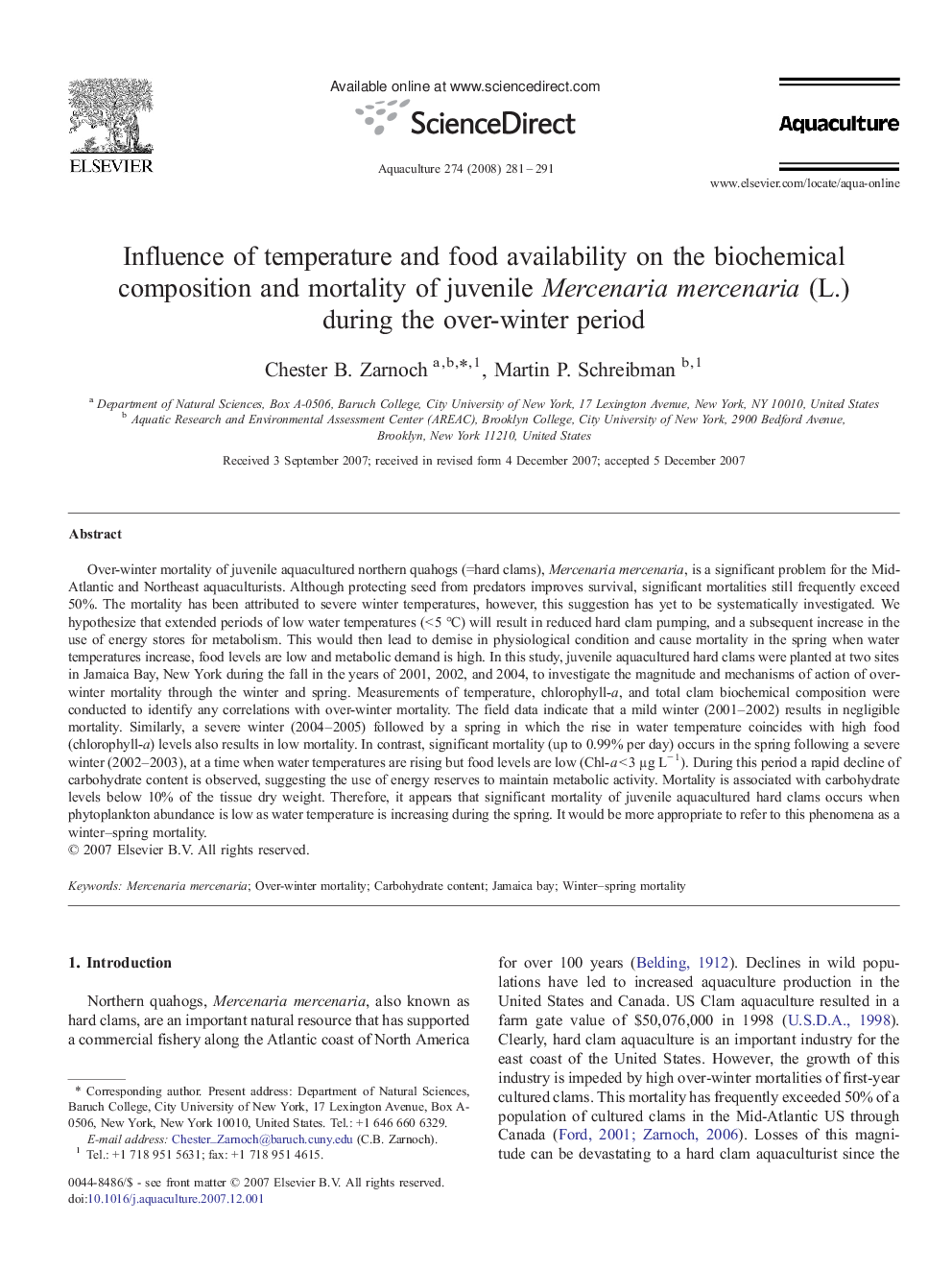| کد مقاله | کد نشریه | سال انتشار | مقاله انگلیسی | نسخه تمام متن |
|---|---|---|---|---|
| 2424598 | 1552968 | 2008 | 11 صفحه PDF | دانلود رایگان |

Over-winter mortality of juvenile aquacultured northern quahogs (=hard clams), Mercenaria mercenaria, is a significant problem for the Mid-Atlantic and Northeast aquaculturists. Although protecting seed from predators improves survival, significant mortalities still frequently exceed 50%. The mortality has been attributed to severe winter temperatures, however, this suggestion has yet to be systematically investigated. We hypothesize that extended periods of low water temperatures (< 5 °C) will result in reduced hard clam pumping, and a subsequent increase in the use of energy stores for metabolism. This would then lead to demise in physiological condition and cause mortality in the spring when water temperatures increase, food levels are low and metabolic demand is high. In this study, juvenile aquacultured hard clams were planted at two sites in Jamaica Bay, New York during the fall in the years of 2001, 2002, and 2004, to investigate the magnitude and mechanisms of action of over-winter mortality through the winter and spring. Measurements of temperature, chlorophyll-a, and total clam biochemical composition were conducted to identify any correlations with over-winter mortality. The field data indicate that a mild winter (2001–2002) results in negligible mortality. Similarly, a severe winter (2004–2005) followed by a spring in which the rise in water temperature coincides with high food (chlorophyll-a) levels also results in low mortality. In contrast, significant mortality (up to 0.99% per day) occurs in the spring following a severe winter (2002–2003), at a time when water temperatures are rising but food levels are low (Chl-a < 3 µg L− 1). During this period a rapid decline of carbohydrate content is observed, suggesting the use of energy reserves to maintain metabolic activity. Mortality is associated with carbohydrate levels below 10% of the tissue dry weight. Therefore, it appears that significant mortality of juvenile aquacultured hard clams occurs when phytoplankton abundance is low as water temperature is increasing during the spring. It would be more appropriate to refer to this phenomena as a winter–spring mortality.
Journal: Aquaculture - Volume 274, Issues 2–4, 5 February 2008, Pages 281–291